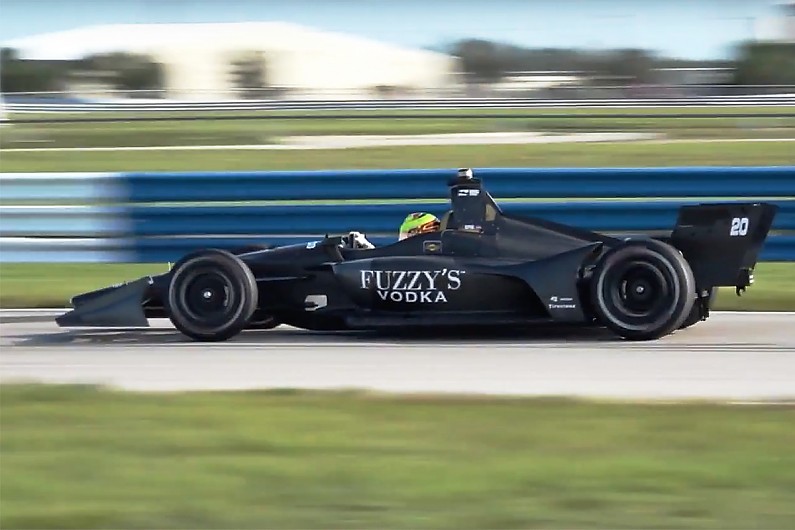The new universal aerokit for 2018 has completed its IndyCar-led testing at Sebring, with six drivers taking part.
Regular testers Juan Pablo Montoya and Oriol Servia were joined by 2017 champion Josef Newgarden, Scott Dixon, Spencer Pigot and James Hinchcliffe for Tuesday’s running.
Next year’s car will be lighter than the current machinery and a total of 66% of the downforce will be generated from underneath the car, with IndyCar having tested it on superspeedways, short ovals and road courses.
The final test at Sebring was aimed at replicating the conditions of a street race, with Servia saying the test proved that the car would be a handful on street tracks.
“The test went well and we did everything we were supposed to,” he told Autosport.
“Actually I think it went even better than IndyCar hoped because we wanted it really hot to make sure that the cooling for the engine, electronics and brakes was good enough.
“But the car was a real handful, and that’s good. It’s the most difficult we’ve found anywhere in these four tests, and man, it was so loose. And that’s what the good drivers wanted, right?
“It’s going to make the teams have to find totally new set-ups.
“The street course set-ups for the last three years will not work at all with this car, so everyone’s going to have to go back to the drawing board to make this car work.”
Pigot, who will drive full-time for Ed Carpenter Racing next season, told Autosport the new package lived up to Servia and Montoya’s claims.
“Everything that Montoya and Servia have been saying about the car is true,” said Pigot.
“It’s very different from the 2017 car – less grip, you’re working the steering wheel more, sliding around a lot more, the brake zones are a bit longer, the power-down is less straightforward.
“You’re definitely having to modulate the throttle to prevent wheelspin, and I don’t just mean in the tight corners, either. As you accelerate through second and third, the rear of the car is getting lively.”
The 2015 Indy Lights champion said the car had very different demands from the outgoing version.
“This is challenging in a different way, and it’ll take a different approach to things,” Pigot added.
“The G-forces are a bit different but I didn’t notice it in my neck specifically. I noticed it more through the wheel, you can feel there’s less steering load.”
IndyCar teams will get their allocation of standard aerokits in the autumn in order to fit them to the Dallara chassis ahead of their own testing in January.
